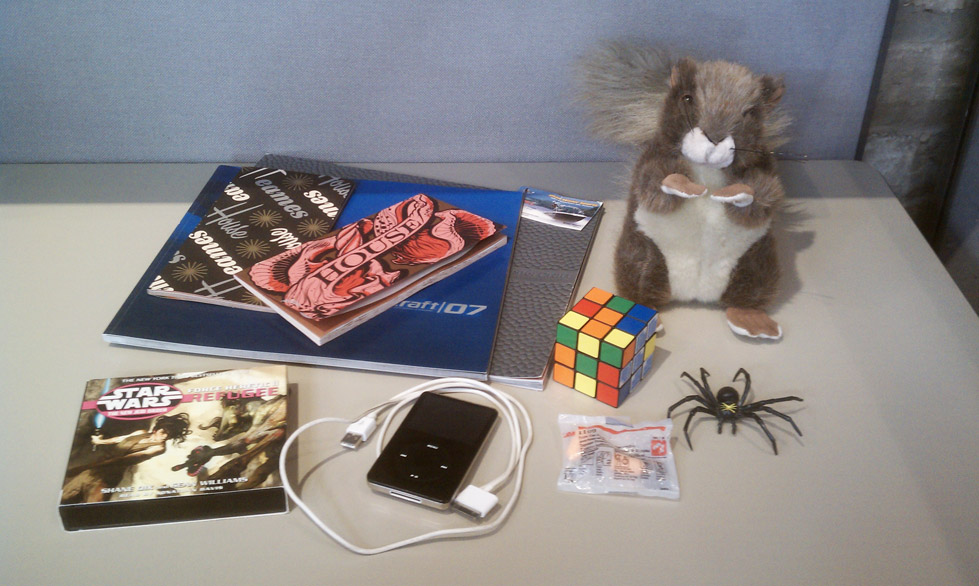
LearnKey Blog
Web Browsing Tips – Disable Compatibility View
When you work with websites for a living, you tend to pick up on the different quirks of all the web browsers. You know which ones have trouble with spacing, or which ones work better with certain Flash objects, and so on. For most people who don’t live their lives inside a web browser, it can be confusing – and that’s why we’re here to help!
Internet Explorer 8 and 9: “Compatibility View”
At first glance, you may see Compatibility View and feel the need to turn it on, or else your web experience might be glitchy and broken. That may have possibly been the case when IE8 was first released, but these days it does the exact opposite. To understand what I mean, there’s a few things about Internet Explorer you need to know.
Continue reading “Web Browsing Tips – Disable Compatibility View”
Happy Flag Day!
Happy Flag Day! This is a holiday that has always confused me. Don’t get me wrong, I understand that it is a day to honor and celebrate our country’s flag, but why would we celebrate the flag on a separate day from our Independence Day? As we do with most of life’s questions, I went to the Internet for answers.

LearnKey Events – Summer 2011
We attend a lot of tradeshows throughout the year, but summer is definitely our busiest tradeshow season. We wanted to give you a quick rundown of which events we will be attending:
54th PTE Summer Conference
June 15-17, Boise, ID
ISTE 2011
June 27-29, Philadelphia, PA
64th Annual GACTE
July 10-13, Atlanta, GA
HealthStream Summit 2011 Recap

I recently attended the HealthStream Summit at the Gaylord Hotel and Convention Center in Nashville, TN. One year ago, the first floor of the hotel was covered with 10 feet of water; in fact, much of the Nashville area was pounded by flood waters. What an amazing feat to bring the hotel back to its original beauty. I snapped a couple photos with my cell phone, but it does not begin to capture the grandeur and detail of the environment. It’s a complete ecosystem under a glass shell. If you find yourself in Nashville it is definitely worth a visit.
Enjoy Memorial Day, and a Special LearnKey Offer

As with most holidays, Memorial Day originally had a more serious and specific meaning than typically observed today. Memorial Day was first meant to commemorate those that had died in military service during the Civil War, but was later changed to include all wars. It was also originally known as Decoration Day, named for the practice of honoring fallen soldiers by decorating their graves.
Today, because of most Monday-Friday workers receiving a 3-day weekend, the holiday is usually celebrated with family vacations, cookouts, and shopping. Most stores have large sales during this weekend, as many people will be looking for somewhere to go or something to do on their holiday.
Which leads me to my next point – now through May 31, in honor of Memorial Day, you can receive 10% off all LearnKey video courseware (that means no MasterExams, Workbooks, or Exam Guides) purchased through learnkey.com.
LearnKey offices will also be closed through the weekend, and will re-open again on Tuesday May 31, which means that all sales, support, and shipping staff will be available again starting Tuesday morning.
Have a happy and safe Memorial Day!
Tech Hiring Drastically Improves California’s Economy
In the first quarter of 2011 California added 90,600 jobs, which was an increase from 82,600 over all of 2010. Just a few weeks ago California’s deficit was an astounding $26 billion, but the state recently cut $11 billion. If this trend keeps going, it could potentially shave off another $6 billion. The added jobs in the state are making it a reality that one day, California might actually be able to get out of debt – and it might be sooner than everyone thought.
This drastic improvement comes largely from the tech industry. Information technology jobs grew by 5.3% in March, outpacing all other industries. This is affecting the San Francisco Bay area and the Silicon Valley with many local companies doubling and even tripling their workforce. This is good news for the technology industry, and for California.
To read the full article visit The Wall Street Journal.
The Power of CSS3
I just stumbled across one of the coolest sites demonstrating of the power of CSS3 – css3please.com. For those of you who don’t know what CSS is, its simply the language web developers use to put style and color into an average web page. CSS3 has taken style to the next level by allowing designers and developers to not only be able to add a color to an object, but be able to have it display a gradient from any specific color to another. You can also add drop shadows, rounded corners, custom font faces, and even rotation to an object. These features take a lot of pain out of website development by making objects much easier to work with, and quicker to customize and create. Any good developer can tell you of the hassle of trying to make a box with rounded corners without CSS3 – having to first create the image in Photoshop, then cut the image into several smaller pieces, and then get them all to behave and fit tightly together to look like they never were cut up. That can take quite a bit of time. Compare all that with this CSS3 code:
The New Office, Moving, and Other Happenings

Over the past week, everyone in our St. George, UT office has been moving into our new office space. We’re currently occupying the theater area of the Main Street Ballroom and Theater, which has been converted into a modern office space over the past few years. (Check out the photo album on our Facebook page to see the completed office.) It’s quite a big change from our previous space, which was the ballroom area of this same building. No dance floor lighting or chandeliers this time around, but I think we’ll manage.
With most of the current Marketing department at LearnKey being fairly new here (2 years or less in a 24-year-old company), there tends to be a lot of stuff around that was left over from our predecessors. I personally go by the “If you don’t know what it is, don’t touch it” rule, so over time, things started to accumulate.
As you can imagine, cleaning out drawers and taking down cubicles lead to finding some pretty random stuff.

Pictured: boat catalogs, font books, a Star Wars audio book, a classic iPod Video, ear plugs, a rubber spider, and a plush squirrel. Don’t ask, because we don’t know either.
We’re all moved in by now, but it’s still taking us a little while to get settled and used to our new routines. For instance, apparently this new office gets quite warm when nobody turns on the air conditioning. Who knew?
Regardless of our comfort, we have some cool stuff going on. Our (sort of) Quarterly Newsletter is coming soon, and if you’re not already a subscriber, you can sign up here. We have a SQL Server webinar coming up on June 3 featuring expert Wayne Snyder, which is free to attend. Our Client Services department is a currently a finalist for Support Department of the Year in the 2011 American Business Awards (read the full press release here). We were also recently notified that our Server+ video training course has achieved CompTIA Authorized Quality Curriculum status (more on that next week).
We are also always looking for new ideas. Are there any specific topics you would like to see us cover in the blog? Do you have an idea for a course you would like to see LearnKey release? Let us know in the comments!
New SQL Sever Webinar Featuring Wayne Snyder
We have once again partnered with noted Microsoft SQL Server Expert Wayne Snyder and Mariner, a leading Microsoft Gold Partner, to provide a free SQL Server webinar.
Management Data Warehouse & Utility Control Point
Friday, June 3, 2011 1pm ET/10am PT.
Direct from Wayne Snyder, MVP
SQL Server 2008 introduced the Management Data Warehouse (MDW). MDW will automatically collect information about Query stats and index usage, resource locking and blocking and disk usage. We can use this information to improve performance troubleshooting.
SQL Server 2008 R2 added the SQL Server Utility and Utility Control Point (UCP). UCP automates some of the MDW functionality and provides additional reporting for Data Tier Applications, Database Files, storage volumes, and CPT utilization.
Register for the webinar to learn more about UCP.
Already have questions about UCP?
Email them to info@mariner-usa.com by June 1, 2011.
Friday The 13th
Today is a seemingly innocent but quite interesting day – Friday the 13th. There are a lot of superstitions and supposed bad luck surrounding this day, but how much of it is true and how much has been blown out of proportion?
Friday has traditionally been thought of as an unlucky day (to me it is the best day of the week – start of the weekend) and 13 has been considered an unlucky number (my lucky number). The combination of the two has even led to a phobia paraskavedekatriaphobia – the abnormal fear of Friday the 13th.
